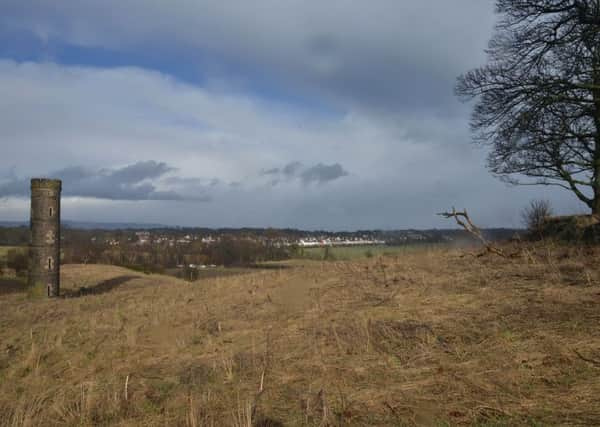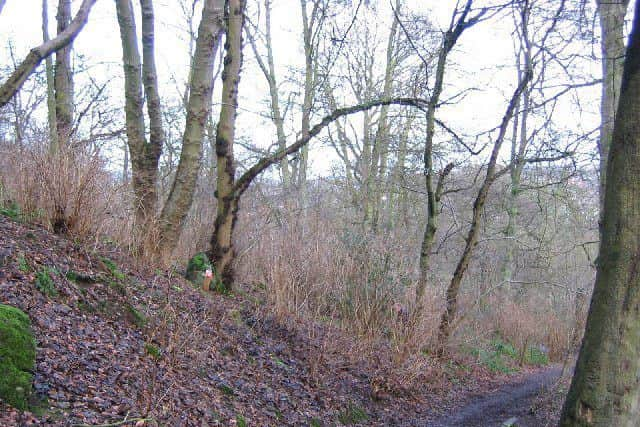5 of the best woodland walks in Edinburgh


Whether it’s spring, summer, autumn or winter, Edinburgh’s woodlands are a delightful place for a walk. If city life is getting you down, why not try one of our favourite woodland walks to help you reconnect with nature?
Lord Ancrum’s Wood
The South Esk river in Midlothian, just outside Edinburgh, has been lined with trees for thousands of years. Because it has been around for so long, the banks of the South Esk are rich with wildlife. The site managers take special care to preserve bird nests, identifying conservation issues before any felling takes place.


Advertisement
Hide AdAdvertisement
Hide AdThe estate takes its name from one of the titles held by the Kerr family, who were Marquises of Lothian and former owners of the wood. The family built a stately home on the site of the old Newbattle Abbey, which is now an adult education centre. Famous Scottish writers such as Edwin Muir and George Mackay Brown studied here, and may have used the woods as inspiration for their works.
When exploring the wood, you may find a cavern known as “the priest hole” which may have been used as a hiding place during the conflict between the Covenanters and the established church.
Craigmillar Castle Park
This natural heritage park has areas of both mature and young woodland, as well as grassland and old quarries. Its name derives from Craigmillar Castle, a baronial building which was built in the 15th century by Sir John Preston, and is associated with Mary Queen of Scots.


In 1997, over 40,000 trees were planted in the park as part of the Millennium Forest for Scotland project. The park is also a green space, and has been awarded a Green Flag for its eco-friendly ethos.
The young woodlands in the north of the park are made up of tree species which are native to Scotland, including alder, birch, oak and ash.
Bird life is abundant in Craigmillar Castle Park, with residents such as bullfinches and buzzards being seen frequently by visitors. There are also plenty of rabbits and voles for the buzzards to prey on.
Corstorphine Hill
Corstophine Hill is covered in trees, and rises above the western suburbs of Edinburgh, providing an oasis of calm in the busy city. It is particularly popular among geologists, as it has been identified as a Regionally Important Geological Site (RIGS), due to its interesting landforms.
Advertisement
Hide AdAdvertisement
Hide AdThe colonies of badgers who live in the area mean that the Hill has also been named a Local Nature Reserve, and it is managed by the Ranger Service.
Despite the tree-cover, you can still get a magnificent view from the top of the Corstorphine Hill Tower, which is open to the public. The tower was built as a memorial to Sir Walter Scott, and has a square plan, with buttressed corners.
The Hill is popular with joggers, dog walkers, and is also used for sledding in the winter.
Hermitage of Braid
The home to the Old Hermitage House is a fantastic place to enjoy the natural world. As well as woodland, there is also scrubland, grassland, and the Braid Burn – all of which provide habitats to a variety of wildlife. Green woodpeckers are known to inhabit the woods, while herons, kestrels and kingfishers have also been spotted.
The Hermitage is designated an ancient woodland, as there have been trees on this site for over 300 years. Beech, ash and sycamore trees are common, mainly dating from the early 19th century, but there are some older specimens which have grown over 40 metres tall.
The Hermitage is also home to Blackford Hill, which geologists love to investigate, as it was formed from the oldest rock in Edinburgh. In 1840, Louis Agassiz, the Swiss geologist, deduced that the grooves in the rocks of Blackford Quarry were caused by glaciers, giving the study of geology in Scotland a new lease of life.
Cammo Estate
On the north-west outskirts of Edinburgh, the Cammo Estate covers 85 acres of woodlands, glades and grasslands.
Advertisement
Hide AdAdvertisement
Hide AdThe house and surrounding lands were given to the National Trust for Scotland in 1975 after the death of the house’s last resident, Percival Maitland-Tennent.
After a fire in 1977, only the outside walls were left standing, which can still be seen today.
Ancient trees, badgers and birds can be found here, as well as interesting plants of restricted distribution.
Due to this, the estate has been named a Site of Importance for Nature Conservation, and has also been recommended as a possible Local Nature Reserve.
Local residents treasure the estate as an ‘informal’ place to properly experience the changing of the seasons.